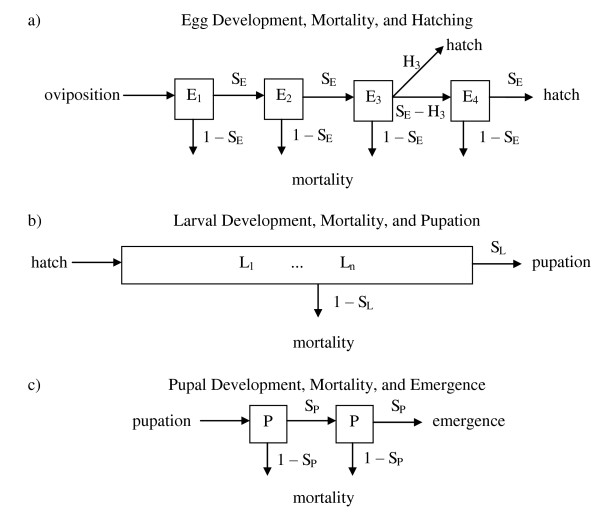Figure 2.
Immature population structure. a) Eggs develop through four discrete stages and each stage is one day. There are two cohorts of eggs, Wolbachia uninfected and infected. During development, eggs move through each stage consecutively, and the number of eggs advancing to the next stage reflects the product of the number of eggs present and SE, daily egg survivorship (Table S1). All eggs hatch after four days except a proportion of eggs hatch at day three (H3, Table S1). b) Larvae develop through s discrete stages, where s is an arbitrary number of developmental stages (s = 30). Larvae are divided into four categories: Wolbachia infected/uninfected and male/female. Larvae move R developmental stages in each time step, where R is the number of developmental stages a larval cohort will progress (Equation 1). The number of larvae progressing from their current development stage, e.g. L2, to their next developmental stage, L2+R, is equal to the product of the number of larvae in a developmental stage and larval survival (Equation 2). Larval survival and development are density dependent. If larvae are Wolbachia infected, they are subject also to the parameter RLV (Table 1), which can reduce the number of surviving larvae. Larvae that reach the last developmental stage become pupae. c) Pupae progress through two discrete development stages and are tracked similar to eggs. Each pupal developmental stage is one day and pupae are subject to SP, daily pupal survivorship (Table S1).

